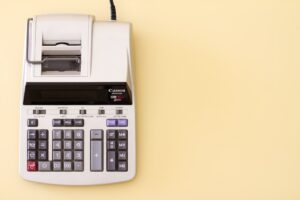The History of Cable Forex: How it Came to Dominate International Finance
The foreign exchange market, or forex, is the largest and most liquid financial market in the world. Trillions of dollars are traded daily, with currencies from all over the globe being exchanged. Among the numerous currency pairs traded, one stands out as the most significant and influential in the forex market – the British pound sterling against the United States dollar, commonly referred to as cable forex.
The term “cable” refers to the first transatlantic cable that was laid under the ocean floor in the mid-19th century. This cable allowed for instantaneous communication between London and New York, revolutionizing international trade and finance. The cable became the primary means of transmitting currency exchange rates between the two financial centers, and thus, the term “cable” became associated with the exchange rate between the British pound and the U.S. dollar.
The origins of cable forex can be traced back to the early 20th century when the gold standard was in place. Under the gold standard, currencies were directly linked to gold, and their values were fixed. However, the outbreak of World War I in 1914 led to the suspension of the gold standard, and currencies began to float freely against each other. This marked the beginning of the modern forex market.
During this time, the British pound was the dominant reserve currency, and London was the leading financial center in the world. As a result, the pound became the primary currency for international trade and finance. The cable forex market emerged as a crucial platform for traders and businesses to exchange British pounds for U.S. dollars and vice versa.
In the aftermath of World War II, the Bretton Woods system was established, which pegged most major currencies to the U.S. dollar. Under this system, the U.S. dollar was convertible to gold at a fixed rate, and other currencies were pegged to the dollar within a narrow band. The pound was fixed at a rate of $4.03, and the cable forex market continued to thrive as traders speculated on the exchange rate between the two currencies.
However, the Bretton Woods system began to crumble in the late 1960s due to economic imbalances and growing inflationary pressures. In 1971, President Richard Nixon announced that the U.S. dollar would no longer be convertible to gold, effectively ending the gold standard. This decision led to a period of floating exchange rates and increased volatility in the currency markets.
As the pound and the dollar floated freely, the cable forex market became even more important. Traders and investors closely watched the exchange rate between the two currencies, as it reflected the economic health and monetary policies of both countries. The cable forex market became a barometer for the global economy, with fluctuations in the exchange rate often indicating shifts in market sentiment and investor confidence.
Over the years, the cable forex market has witnessed numerous significant events that have shaped its dominance in international finance. These include economic recessions, political crises, central bank interventions, and major policy announcements. Each event has had a profound impact on the exchange rate between the pound and the dollar, leading to substantial opportunities for traders and investors.
In recent decades, technological advancements have further propelled the cable forex market’s dominance. The advent of electronic trading platforms and the internet has made it easier for individuals and institutions to participate in currency trading. The market is now accessible 24 hours a day, five days a week, allowing traders from all over the world to engage in cable forex trading.
In conclusion, the history of cable forex is intertwined with the evolution of international finance. From the laying of the transatlantic cable to the modern electronic trading platforms, the pound-dollar exchange rate has played a pivotal role in the forex market. Its dominance is a testament to the significance of the British pound and the U.S. dollar in global trade and finance. As the forex market continues to grow and evolve, cable forex will undoubtedly remain a cornerstone of international financial markets.





